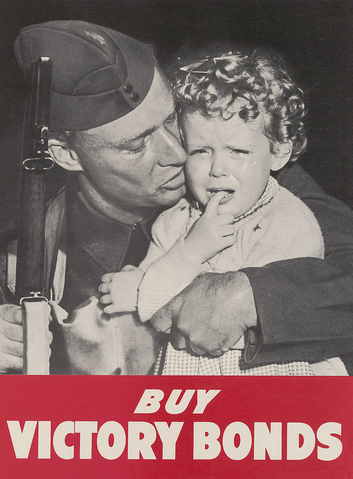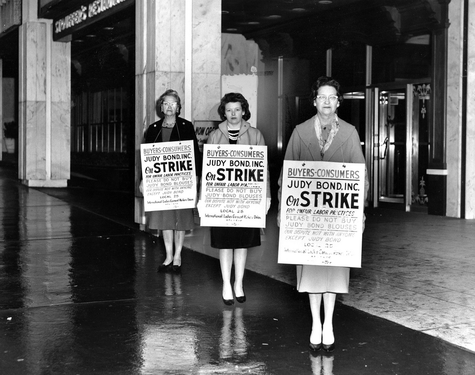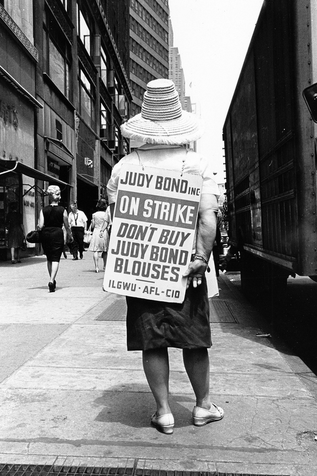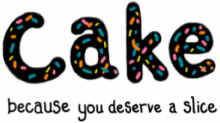 WWII era war bond ads are among the most
WWII era war bond ads are among the mostcustomer-centered, effective advertisements
ever made. Talk about understanding customer
motivation!
As a brand management consultant, one of the most common mistakes I see lean startup ventures make is creating a marketing strategy focused on what the customer *should* want instead of what they *actually* want. I call this the "Field of Dreams" bias because startups get in the mentality of "If you build it, they will come." The primary reason I founded Cake is that I have seen many intelligently designed venture/angel backed startups gasping for air because they spent too much time and money focused on branding the wrong brand. The classic example of this is the hotshot entrepreneur who gets some venture capital and buys a Maserati--he/she is focused on his/her personal brand rather than the success of their company. There are plenty of examples of this surrounding the dotcom boom in the late 90s. One of my favorites is that all of the cool guys in high school got VC, then the high school losers became service people. But, when the startups went belly up, the "losers" from high school were the ones driving the tow truck that pulled their repossessed Maseratis to the bank lot.
This phenomenon is discussed in greater detail in another of my blog posts, Kill your Facebook account before it kills you. The main reason businesses fail In Real Life and with social media campaigns is that they don't spend the necessary time identifying and understanding their customer segment. From my experience, the typical new business will get about 10-15% of the way to identifying a core business segment. In case you're not math oriented, this means 85-90% of capital spent on advertising and marketing is a total waste of cash. It doesn't have to be blown time and spend, but most of the time it is.
If you're a new business, your goal in creating an advertising or marketing campaign should always be to target acolytes (your most devoted customers). Your spend here will have the greatest ROI and create a "viral" progression of advertising. If you've ever seen a new restaurant pop up in your town you'll probably have it on the back of your mind. As soon as you hear a friend talking about it, the first question out of your mouth will be, "Oh yeah, I've seen that--how is it?" You want to make sure that the people who are answering that question l<3ve your brand. Enthusiasm, just like criticism, is contagious.
This phenomenon is discussed in greater detail in another of my blog posts, Kill your Facebook account before it kills you. The main reason businesses fail In Real Life and with social media campaigns is that they don't spend the necessary time identifying and understanding their customer segment. From my experience, the typical new business will get about 10-15% of the way to identifying a core business segment. In case you're not math oriented, this means 85-90% of capital spent on advertising and marketing is a total waste of cash. It doesn't have to be blown time and spend, but most of the time it is.
If you're a new business, your goal in creating an advertising or marketing campaign should always be to target acolytes (your most devoted customers). Your spend here will have the greatest ROI and create a "viral" progression of advertising. If you've ever seen a new restaurant pop up in your town you'll probably have it on the back of your mind. As soon as you hear a friend talking about it, the first question out of your mouth will be, "Oh yeah, I've seen that--how is it?" You want to make sure that the people who are answering that question l<3ve your brand. Enthusiasm, just like criticism, is contagious.
 Hell hath no wrath like a disgruntled employee's scorn.
Hell hath no wrath like a disgruntled employee's scorn. Early in the life stage of the typical startup, enthusiastic employees are a dime a dozen. Opportunity and eau de get-rich-quicke assault the air with an almost heinous frequency. As you begin to reach the mature startup phase, you'll likely need to hire people for things you didn't anticipate, such as a database manager or a PR/marketing person. These hires will typically be more interested in steady growth and getting a paycheck than they will be in engaging your brand and helping you grow into the next WhatsApp.
One of the most overlooked customer segments is your employees. Read that sentence again. It's extremely important.
These people know more about your brand and should care more about its success than anyone, even your major stakeholders. Most companies treat their employees like assets rather than as customers, or god forbid as people. Fulfilled employees not only do better work for your company, they represent your company. If you're a locally-focused business, having outgoing employees who love your company means that their friends and family members will think highly of you too. On the other hand, if you ignore your employees they'll begin to complain about work and their friends and families will hear about that.
One of the most overlooked customer segments is your employees. Read that sentence again. It's extremely important.
These people know more about your brand and should care more about its success than anyone, even your major stakeholders. Most companies treat their employees like assets rather than as customers, or god forbid as people. Fulfilled employees not only do better work for your company, they represent your company. If you're a locally-focused business, having outgoing employees who love your company means that their friends and family members will think highly of you too. On the other hand, if you ignore your employees they'll begin to complain about work and their friends and families will hear about that.
 Visible demonstrations are one thing, but if you think
Visible demonstrations are one thing, but if you think "out of sight, out of mind" you're in trouble.
People talk. Count on it.
Tell me which of the following scenarios would be more memorable to you:
1. You see a smartly designed, fun Facebook campaign for Joe's Non-descript Burger Co that says you can get a free dessert with your next purchase.
2. You hear from someone who knows an employee at Joe's Non-descript Burger Co that Joe screams at employees, refuses to pay fair wages and uses racial epithets to describe customers and his delivery drivers.
Like it or not, your employees will be talking about your brand. They'll talk about it to each other, their friends, and their family. Their credibility about your brand is unparalleled. Keep in mind that people love a good gossip story and everyone likes to complain about work. To illustrate the power of associative PR damage and benefits, I'm going to write up a list for you. But first, I want you to say this word to yourself three times: "Workplace."
1. Google
2. Coca-Cola
3. Wal-Mart
4. Goldman Sachs
5. SAS Institute
6. Outback Steakhouse
I'll wager you thought Google would be a great workplace and Coca-Cola seems like it'd be OK. Wal-Mart has labor problems and terrible PR, even though in many cases the corporate HQ is a wonderful place to work. When you think Goldman Sachs, you probably think "overworked" or you might think "gross, bankers." SAS Institute has an amazing reputation as a great workplace, but you might not be as familiar with it because it's not quite as universal as some of the other brands. You probably saw Outback Steakhouse and said to yourself, "Huh?"
That's the idea. I don't know anything about Outback Steakhouse's work environment or employee happiness. Imagine if they got a reputation for paying their waitstaff $85,000 a year and were sponsoring many charities. Now, imagine if they were forcing employees to work 30 hours of overtime per week and were withholding paychecks until the work was performed, then they slashed paychecks retroactively.
If you want an example of a company that has done this with great success, check out Apple from about 2003 to 2010. I doubt you'll see more loyal customers or employees anywhere you look.
1. You see a smartly designed, fun Facebook campaign for Joe's Non-descript Burger Co that says you can get a free dessert with your next purchase.
2. You hear from someone who knows an employee at Joe's Non-descript Burger Co that Joe screams at employees, refuses to pay fair wages and uses racial epithets to describe customers and his delivery drivers.
Like it or not, your employees will be talking about your brand. They'll talk about it to each other, their friends, and their family. Their credibility about your brand is unparalleled. Keep in mind that people love a good gossip story and everyone likes to complain about work. To illustrate the power of associative PR damage and benefits, I'm going to write up a list for you. But first, I want you to say this word to yourself three times: "Workplace."
1. Google
2. Coca-Cola
3. Wal-Mart
4. Goldman Sachs
5. SAS Institute
6. Outback Steakhouse
I'll wager you thought Google would be a great workplace and Coca-Cola seems like it'd be OK. Wal-Mart has labor problems and terrible PR, even though in many cases the corporate HQ is a wonderful place to work. When you think Goldman Sachs, you probably think "overworked" or you might think "gross, bankers." SAS Institute has an amazing reputation as a great workplace, but you might not be as familiar with it because it's not quite as universal as some of the other brands. You probably saw Outback Steakhouse and said to yourself, "Huh?"
That's the idea. I don't know anything about Outback Steakhouse's work environment or employee happiness. Imagine if they got a reputation for paying their waitstaff $85,000 a year and were sponsoring many charities. Now, imagine if they were forcing employees to work 30 hours of overtime per week and were withholding paychecks until the work was performed, then they slashed paychecks retroactively.
If you want an example of a company that has done this with great success, check out Apple from about 2003 to 2010. I doubt you'll see more loyal customers or employees anywhere you look.

 RSS Feed
RSS Feed
